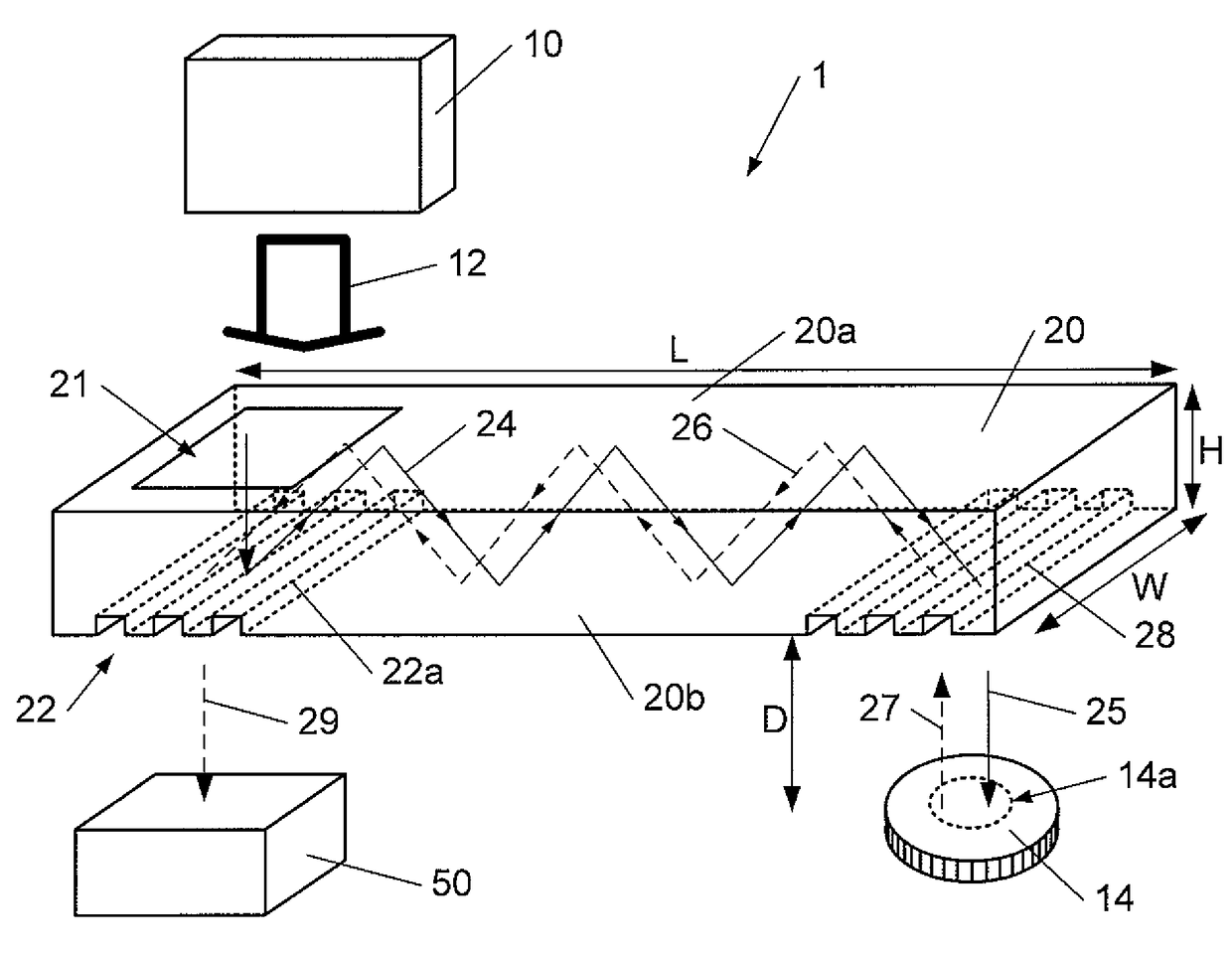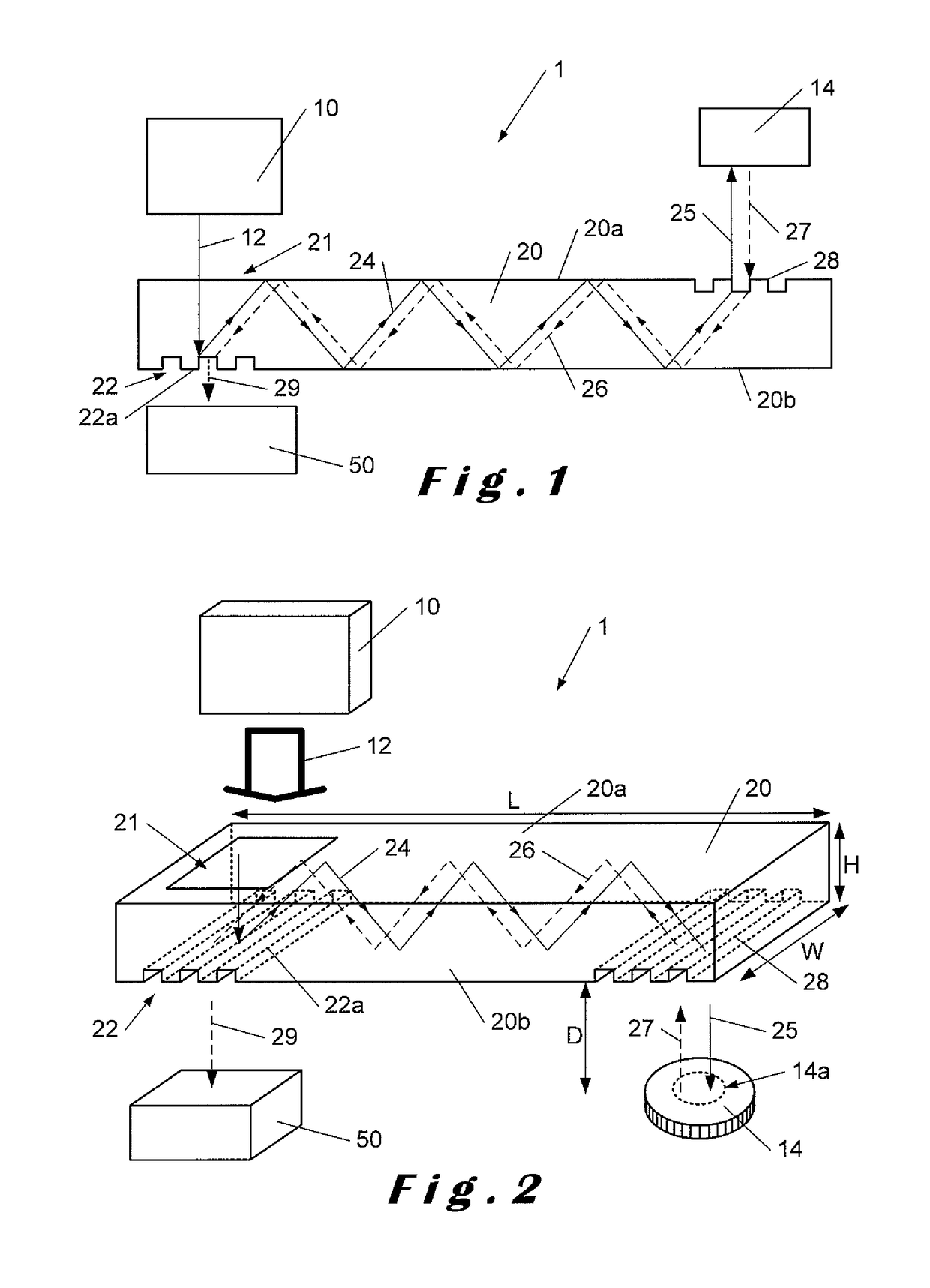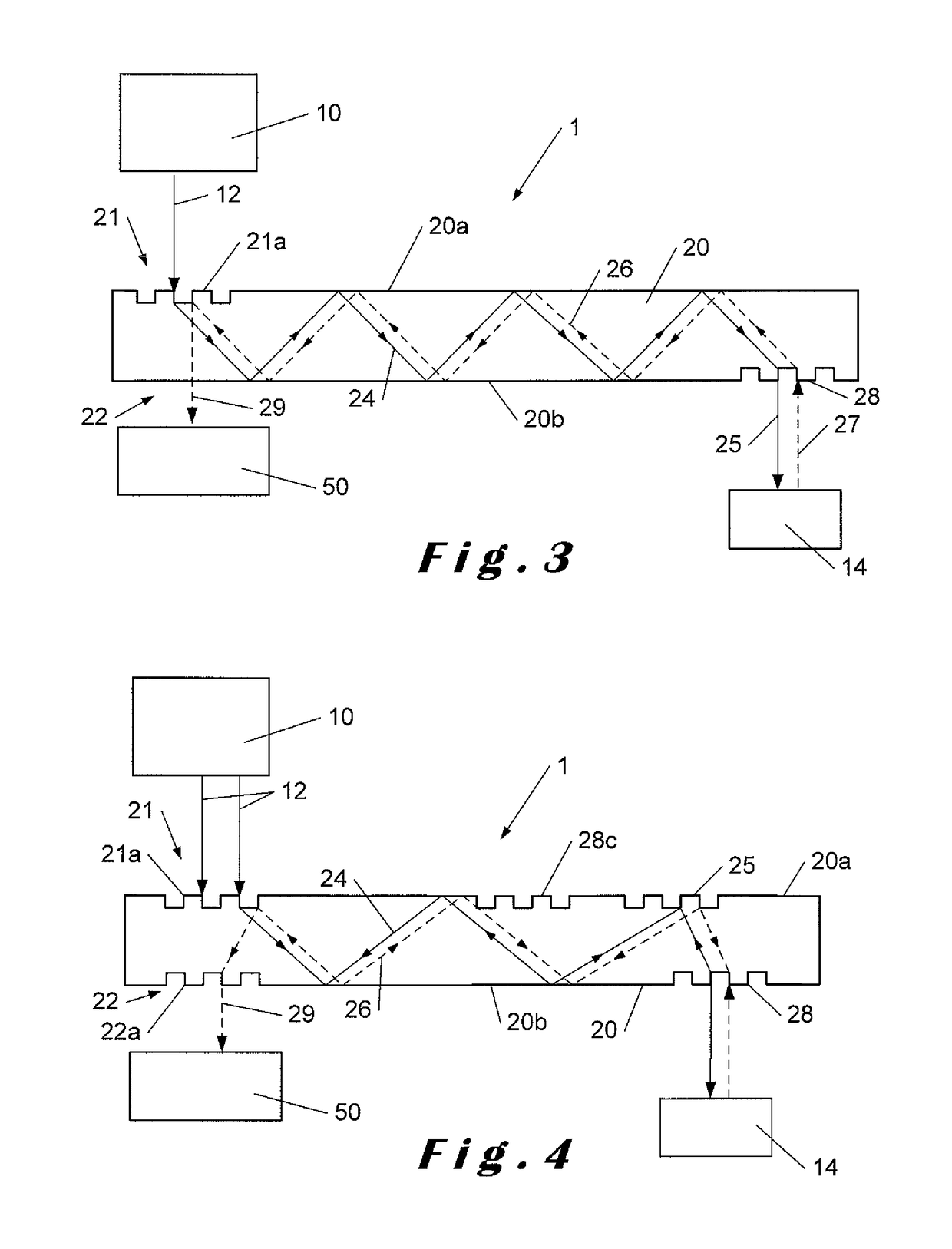Imaging system
a technology of imaging system and image, applied in the field of imaging system, can solve the problems of difficult miniaturization of the system, huge technical challenge, and use of lenses, mirrors or beam splitters, and achieve the effect of improving the image system, improving the image contrast, and improving the performance of the image system
- Summary
- Abstract
- Description
- Claims
- Application Information
AI Technical Summary
Benefits of technology
Problems solved by technology
Method used
Image
Examples
Embodiment Construction
[0043]The following detailed description illustrates the principles and examples of embodiments according to the invention. It will thus be appreciated that those skilled in the art will be able to devise various arrangements that, although not explicitly described or shown herein, embody the outlined principles of the invention and are included in its scope as defined in the claims. In the description and the figures, similar reference signs refer to the same or similar components or structural elements.
[0044]Imaging system 1 according to the invention comprises a light source 10 which is coupled into an optical waveguide 20. A part of the guided light 24 illuminates an object 14 and returned light beam 26 returned by the optical waveguide 20 is directed on an imaging system 50. The imaging system 1 of the invention does not require any optical elements that must be assembled at the extremity of the optical waveguide 20, which simplifies considerably the optical system, makes it mo...
PUM
 Login to View More
Login to View More Abstract
Description
Claims
Application Information
 Login to View More
Login to View More - R&D
- Intellectual Property
- Life Sciences
- Materials
- Tech Scout
- Unparalleled Data Quality
- Higher Quality Content
- 60% Fewer Hallucinations
Browse by: Latest US Patents, China's latest patents, Technical Efficacy Thesaurus, Application Domain, Technology Topic, Popular Technical Reports.
© 2025 PatSnap. All rights reserved.Legal|Privacy policy|Modern Slavery Act Transparency Statement|Sitemap|About US| Contact US: help@patsnap.com



